QNAP GM-1002 Market Impact
As we were discussing this unit internally, we had a number of thoughts regarding this unit. At first, we thought this was a high-availability controller. It is not. The QNAP team offers a lot of the great ZFS snapshot and replication features but does not have an active-active solution here.
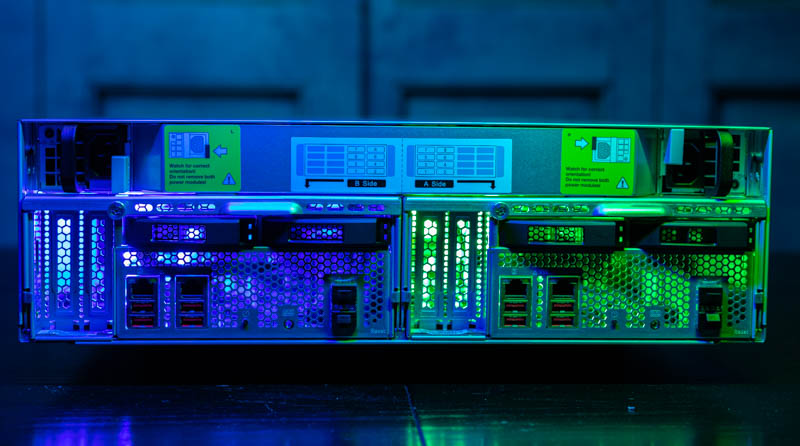
Perhaps the easiest way to describe the system is simply as two NAS units that are joined in a single chassis. When looking at the hardware itself, it is fairly clear that the GM-1002 chassis and design was not just for this initial unit, but that the chassis was designed to do more in future product iterations.
To us, the big opportunities QNAP has with this system are twofold. First, if QNAP adds clustering support in QuTS hero, the GM-1002’s purpose becomes much more clear. There are large high-performance computing solutions and others who have added Lustre or GlusterFS atop of ZFS. This allows for both ZFS’s underlying features such as snapshots to be used while creating a higher-availability clustered solution. For QNAP, adding this type of feature, or going bigger with something like Ceph, would mean QNAP customers can get to that next-level of feature set and use case coverage from the company. For the GM-1002, it has a great setup for data/ cache drives, so this would be an ideal platform to increase node density in a rack for customers looking to build a smaller 3-5 scale-out node solution. QNAP could then extend its container/ virtual machine hosting solutions and effectively bring a hyper-converged solution to the SMB/ SME segments that are underserved by VMware, Nutanix, Microsoft, and others.
Again, this is a software change, and we do not have QNAP’s roadmap so this is a conjecture that QNAP could go this route, but it is not an official roadmap item from the company. Still, we feel like this would make a lot of sense.
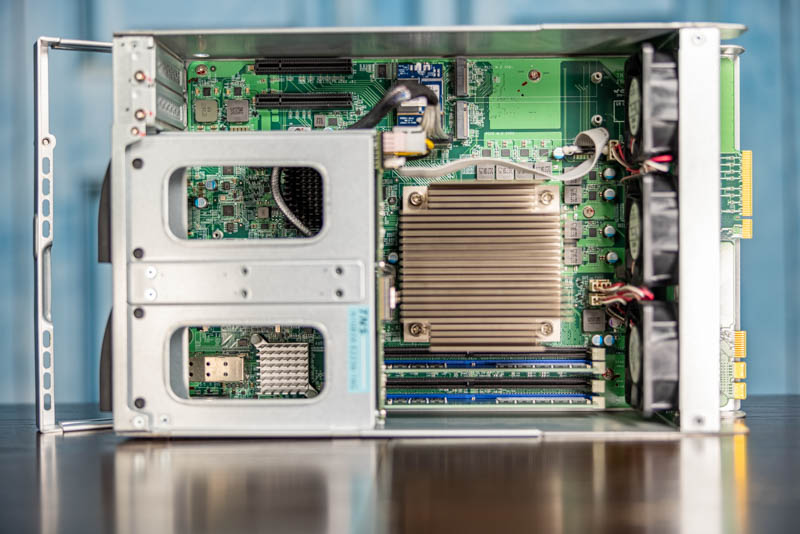
The other key item that we would like to see QNAP undertake is offering updated/ differentiated nodes. One of the key benefits of a multi-node chassis solution in this NAS segment, or in the broader server segment is the ability to re-use power supplies or chassis. A great example is that blade chassis can be used for multiple generations and even 2U 4-node chassis like the Dell EMC PowerEdge C6525 we reviewed have a common chassis that can be used for Intel or AMD nodes. Offering a clear roadmap to future node options will help QNAP demonstrate to customers that its solution is designed to span multiple generations, protecting the investment in the chassis and power supplies.
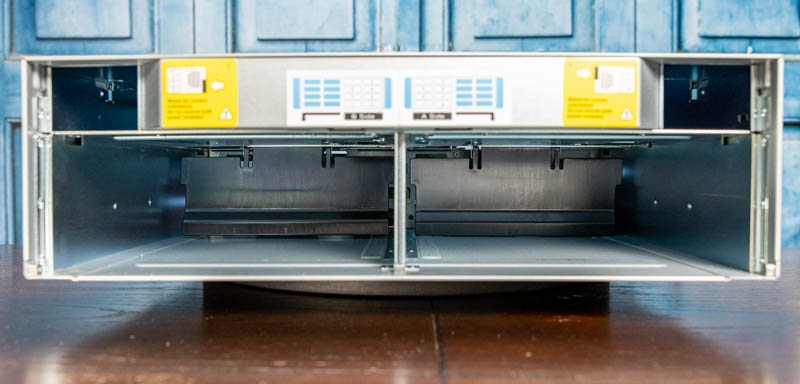
There is a recognized benefit to using a chassis for multiple generations. Sheet metal, SATA backplanes, and modern power supplies will outlast many NAS/ server nodes. Re-using them creates less waste and is better for the environment. The key is demonstrating to customers a commitment to the platform so that customers can feel like the cost and ecological benefits of a shared chassis design will be realized.
Final Words
Overall, the QNAP GM-1002 is going to be a polarizing product. There will clearly be STH readers who will see a product like this and still look for traditional two NAS solutions even if they require slightly more rack space and PSU connections. We know we have readers that will see the integration that QNAP did and want more. At the current level of integration, this solution is still competing with two 2U nodes. As an aside, this is very similar to what we see in the popular 2U 4-node server space except that it is a 25% reduction in rack space versus a 50% reduction we see in the 2U4N segment.
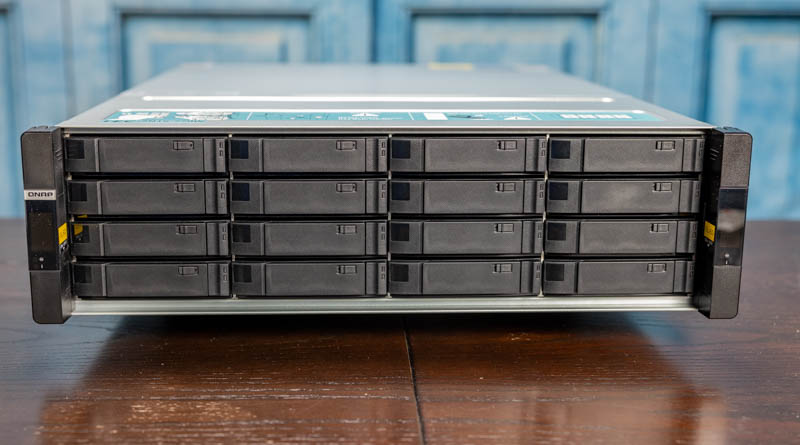
On the other hand, taking the unit for what it is, dual ZFS NAS units we see a lot of potential around. There are organizations such as managed service providers and internal IT organizations that will want to deploy different physical NAS solutions for different groups or applications. As a result, instead of installing one larger NAS, or perhaps in conjunction with one larger NAS, this provides a streamlined experience for managing multiple departmental level NAS units or NAS units for a particular customer. One must remember as well that with ZFS, and QNAP’s expansion cards, one can connect disk shelves/ JBODs to these units and manage larger arrays from each NAS. Some will like the simplicity of managing a base NAS unit and then being able to customize it with external storage. That customization also leads one to see use cases where we could have one NAS that is configured as a backup server, and another NAS that is configured with 16Gbps FC adapters for a different application.
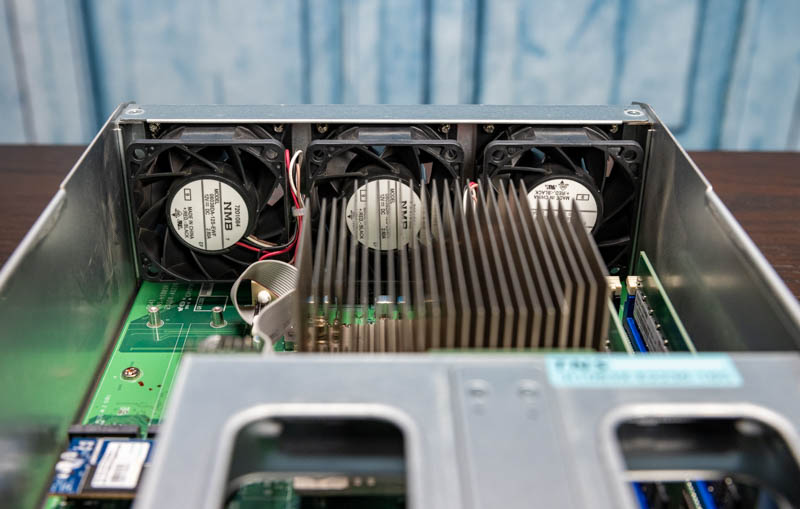
Overall, we like the push QNAP is making to help customers scale to higher NAS node densities and using ZFS. The lifecycle serviceability of a multi-node chassis solution is generally excellent and saving 25% rack footprint will matter for a number of users. As a result, this is a product from QNAP that we find in a sense daring. Most of QNAP’s units are built for as general market appeal as possible. The GM-1002 is focused more on markets that have density and serviceability requirements. Peeling away the sheet metal, we can see that QNAP built the GM-1002 in a form factor ready for future updates. Likewise taking QNAP’s easy-to-manage platform and bringing ZFS into the mix shows that the company is setting up for a push up-market.




Thanks for the review.
IMHO Qnap has pretty good hardware, an ok price/perf ratio, and a quite useable GUI for even beginners.
BUT: There software quality control has become absolutely horrendous in the last years.
I still have administered QNAP NASes for some people in my family until i could convince them to invest into a DIY linux server i build and administer for them late last year.
There were serious vuernabilities so frequently like i have NEVER experienced in any IT product whatsoever.
Even when one reades the relevant IT news sites, there is no other company by far mentioned with urgent security issues.
Add to that bugs, fatal updates..
It was already bad years ago, and it got even worse. They push out new products and OS features and seem to have much too few or too few experienced personal dedicated to security and QA.
One just needs to look at the QNAP forums.
I would not trust them with any production setup. Not for a second. And the seeming ease of use of their web panel does not make up for the manhours and lost sleep that those regular – serious – security issues will take up over even 2-3 years.
I can not speak for the new ZFS based OS version, but it seem to not differ to much from the crappy quality of the non-ZFS version.
This is quite sad, because IMHO if they could get the quality right and security, they would be easily the best brand on the SOHO/Home user NAS market.
But as a potential customer mostly only discovers the security problems after buying the product, pumping out new SKUs to generate cashflow instead of investing in long term quality seems to be the (shortsighted) strategy of QNAP.
‘Although the PSUs are shared, we illuminated the A side node in Blue and the B side node in Green’ …just because you could. You don’t have to make up a reason to look cool :)
Fan’s 12V x 1.80A @ full speed.. 21.6Wx6pcs. Thats approx. 130w of power, i’m not surprised at 70% of speed they will eat close to 100W and dBA59 is disaster for office use.
Interesting, but there are two things that would make this really interesting and much more useful. Either:
A) Get us some dual ported SAS drives and let us run it active/active, or at minimum a failover at the backplane end (even if it ends with some downtime).
B) A cluster with a bunch of these using vSAN or S2D type storage (moreso than Gluster even) so that you can have full node redundancy. Two of these in 6U and it can survive a full node failure would be a good thing to have.
Otherwise, sure, cool, but besides saving 1U of rack space and a few nice features, it seems a very small benefit over two 2U NAS that cost less and can handle more drives. And forget NAS, this is at the price point where I could purchase two 2U servers with 8 LFF drive bays!